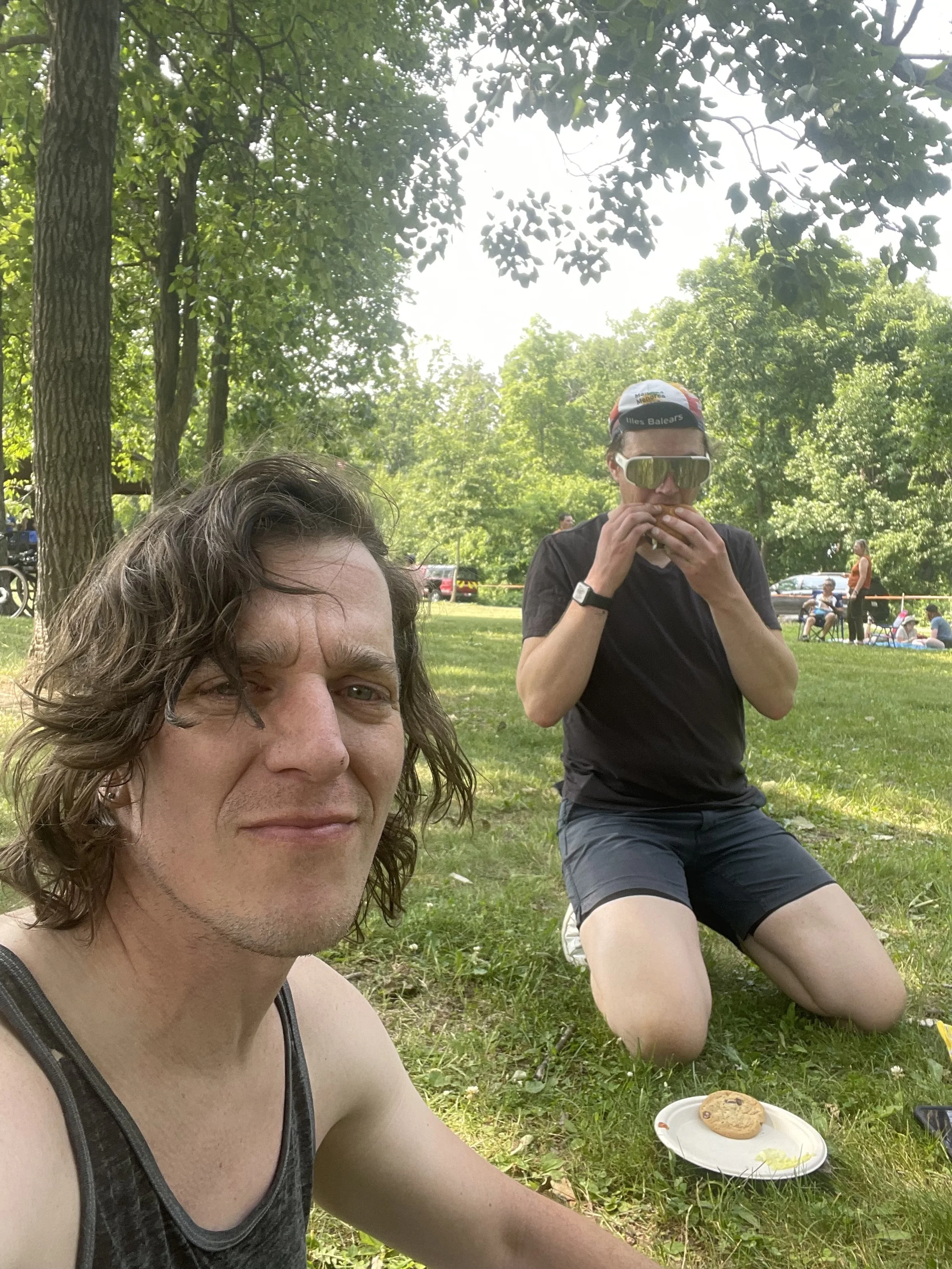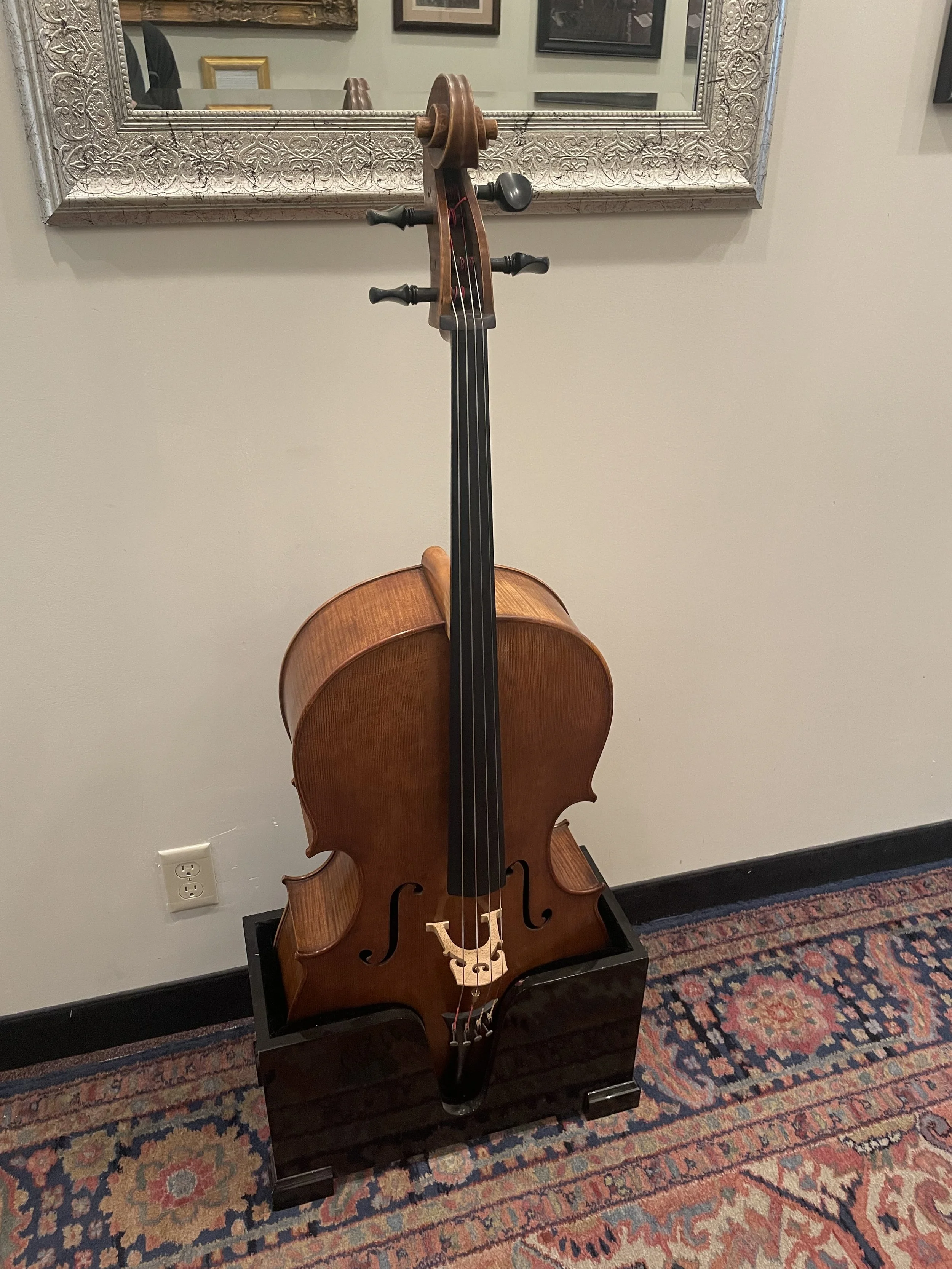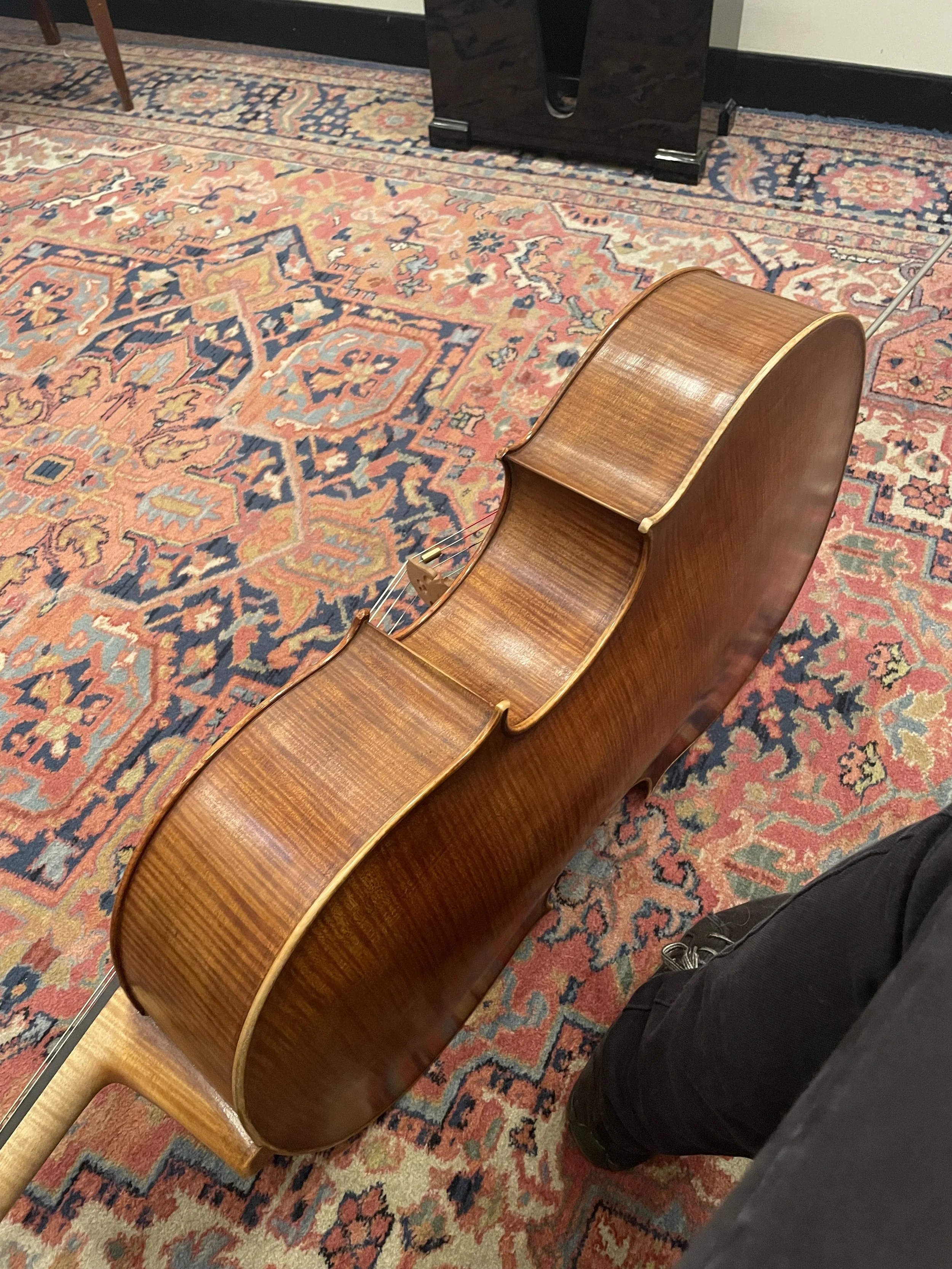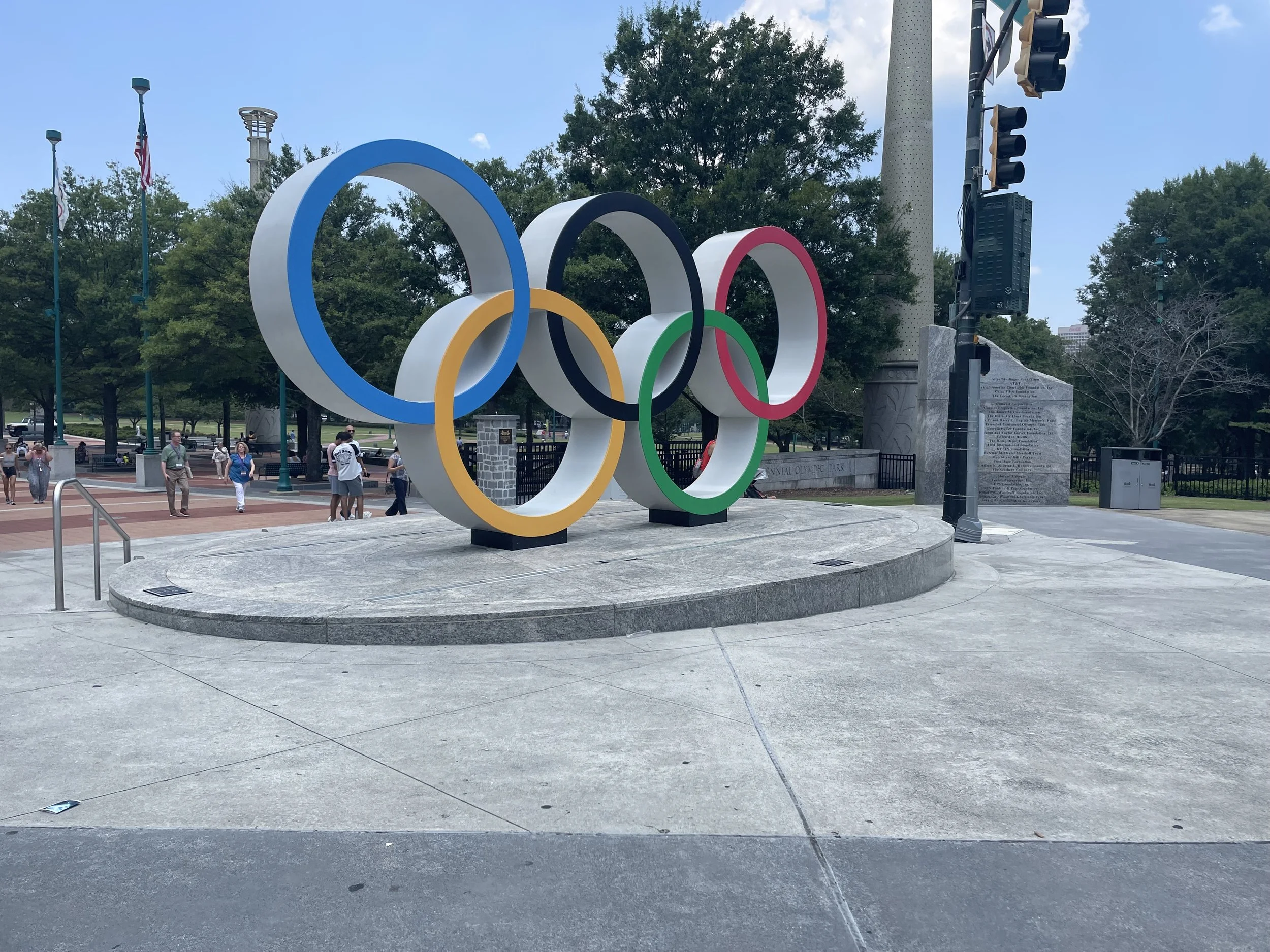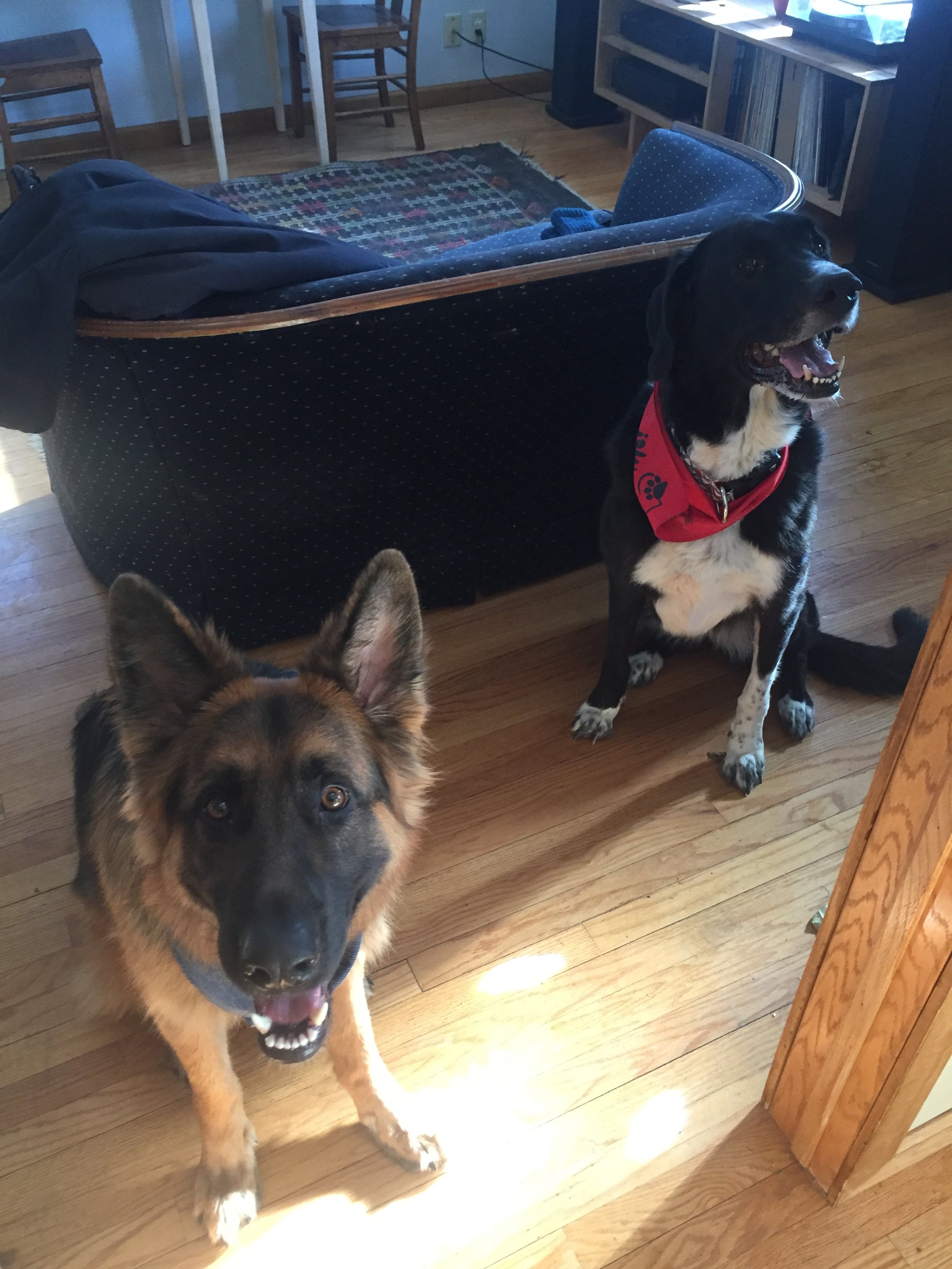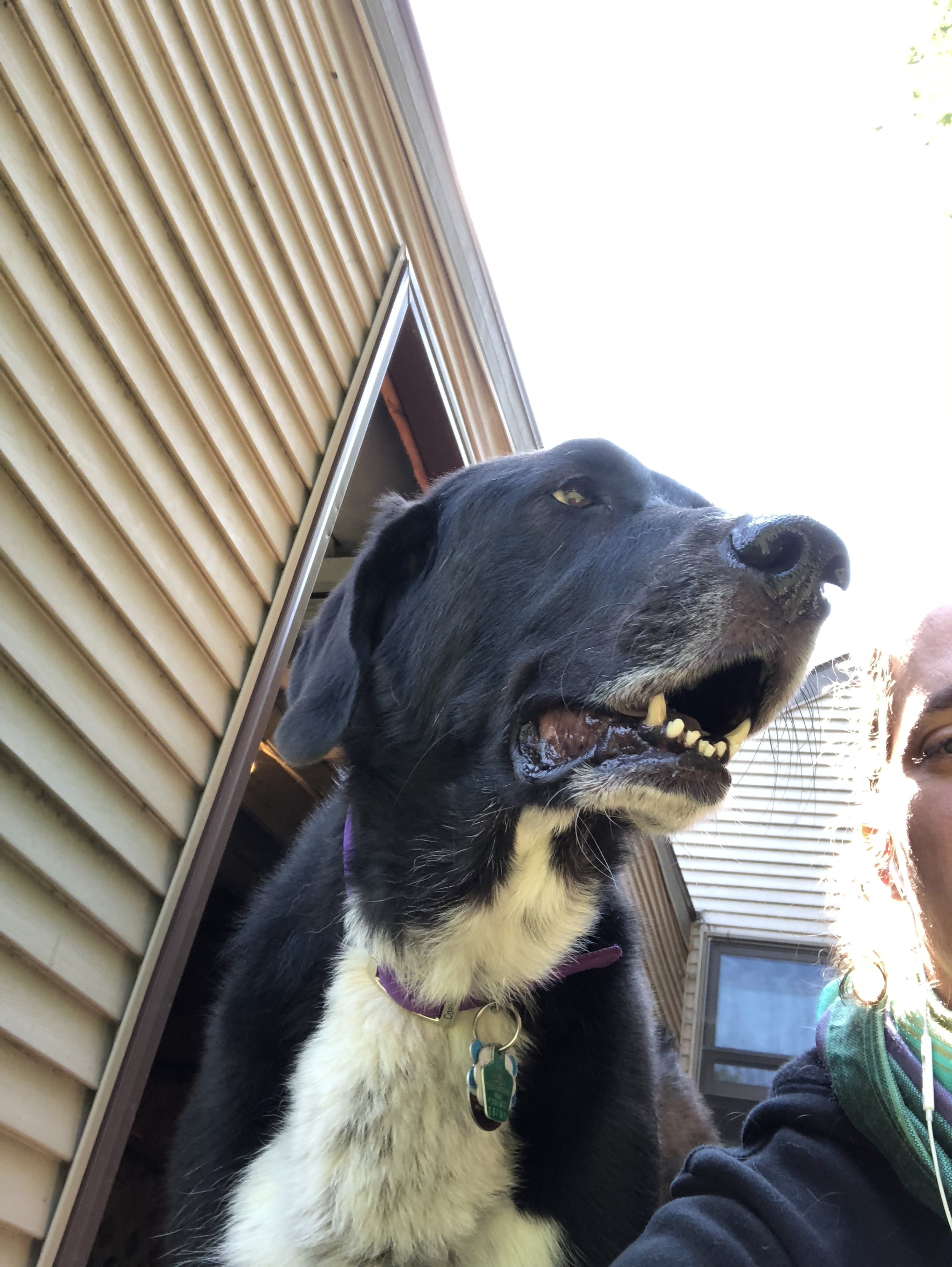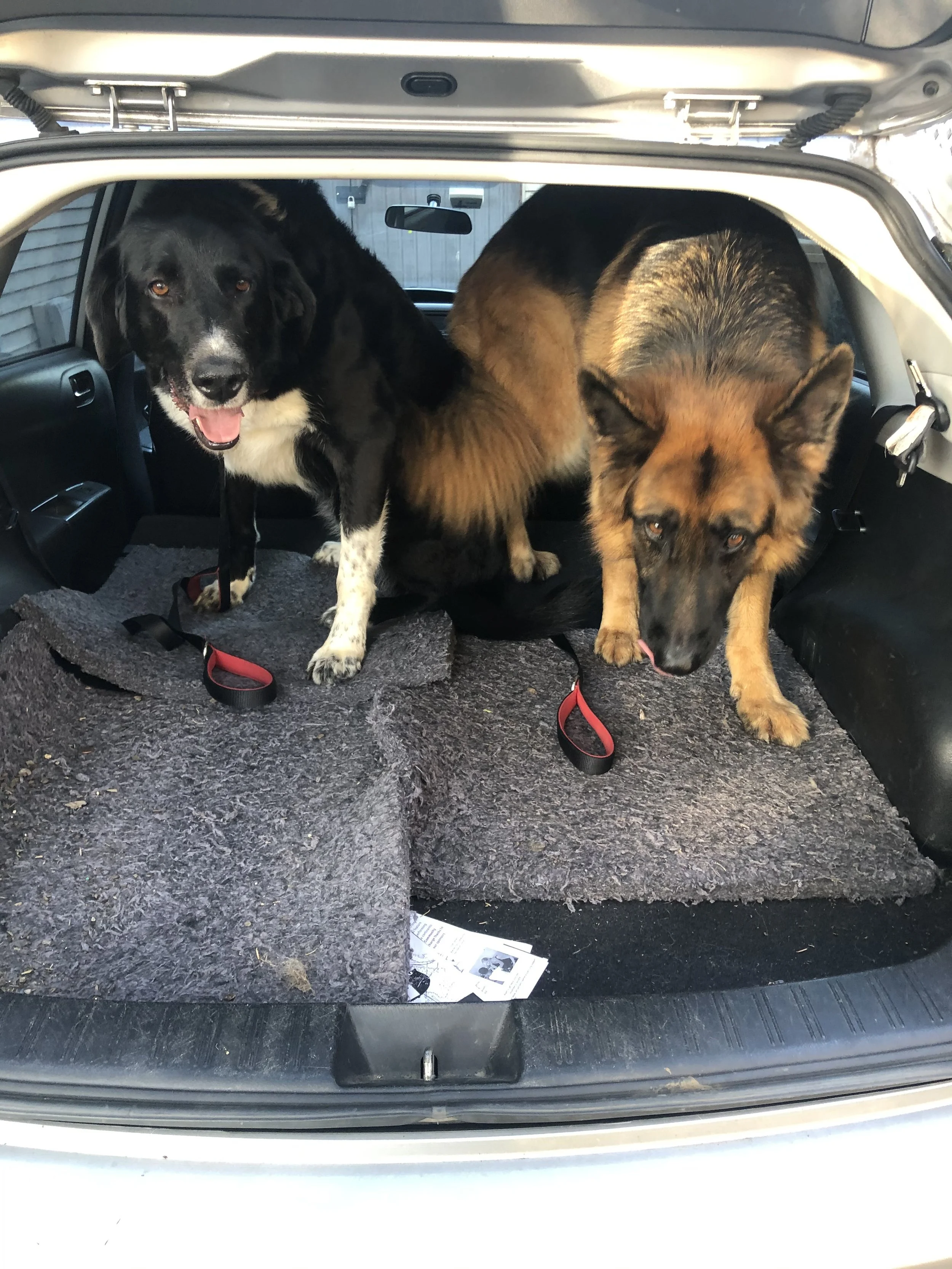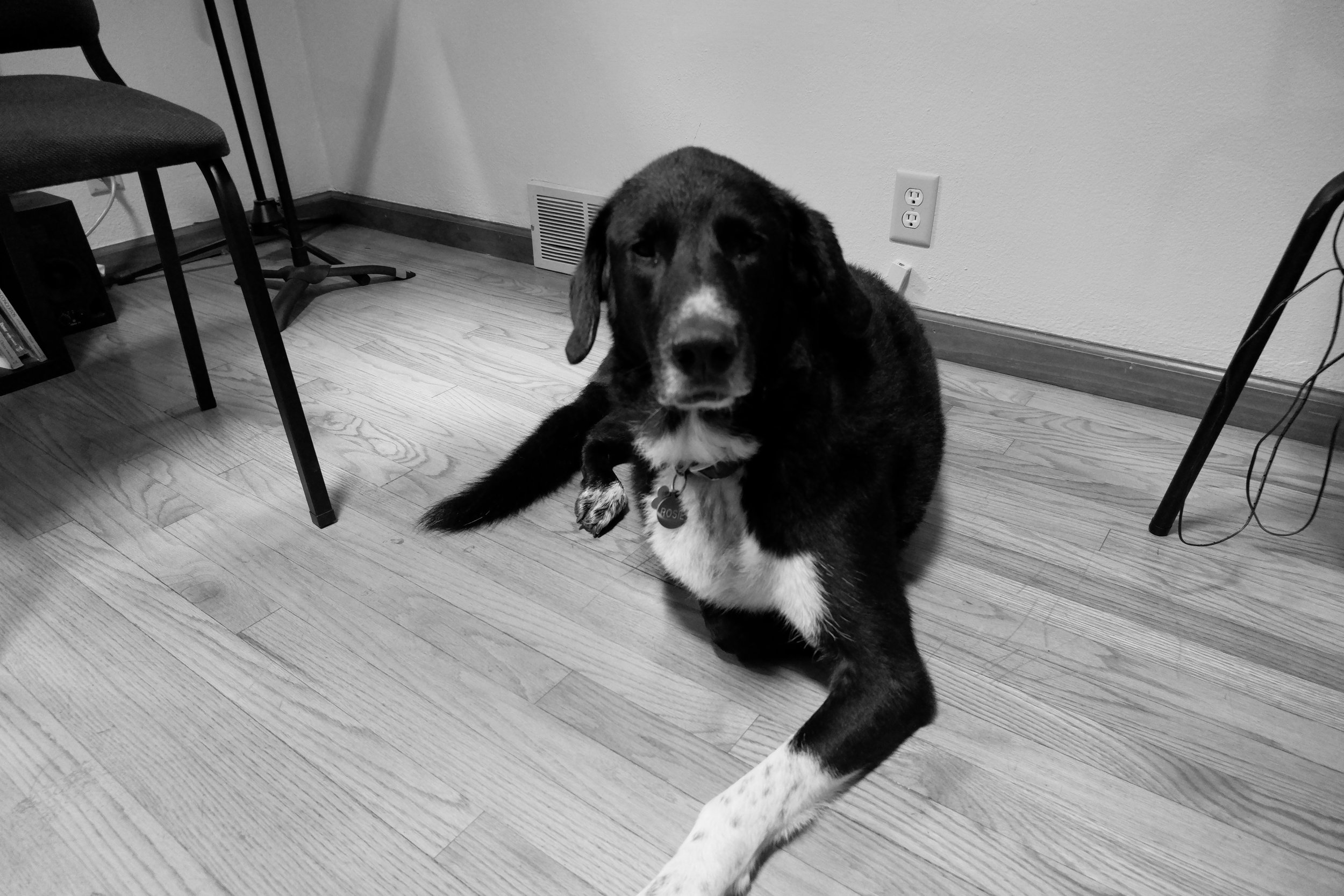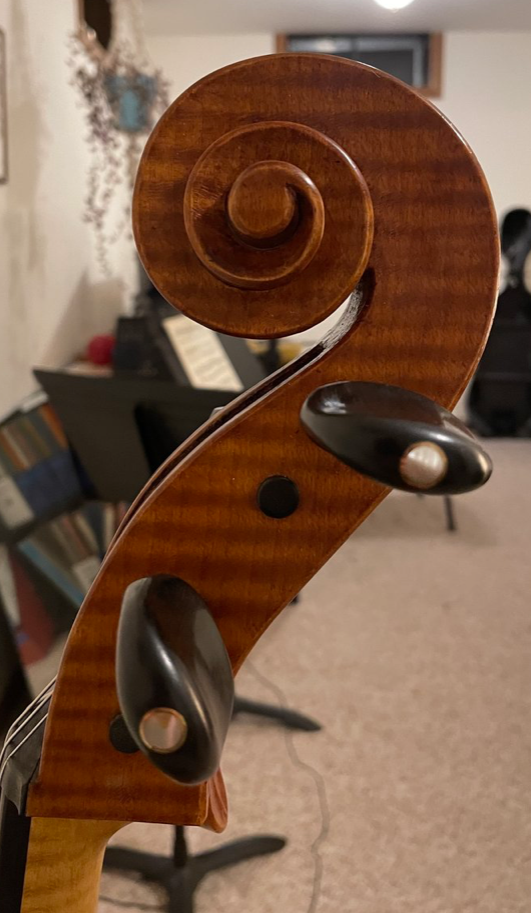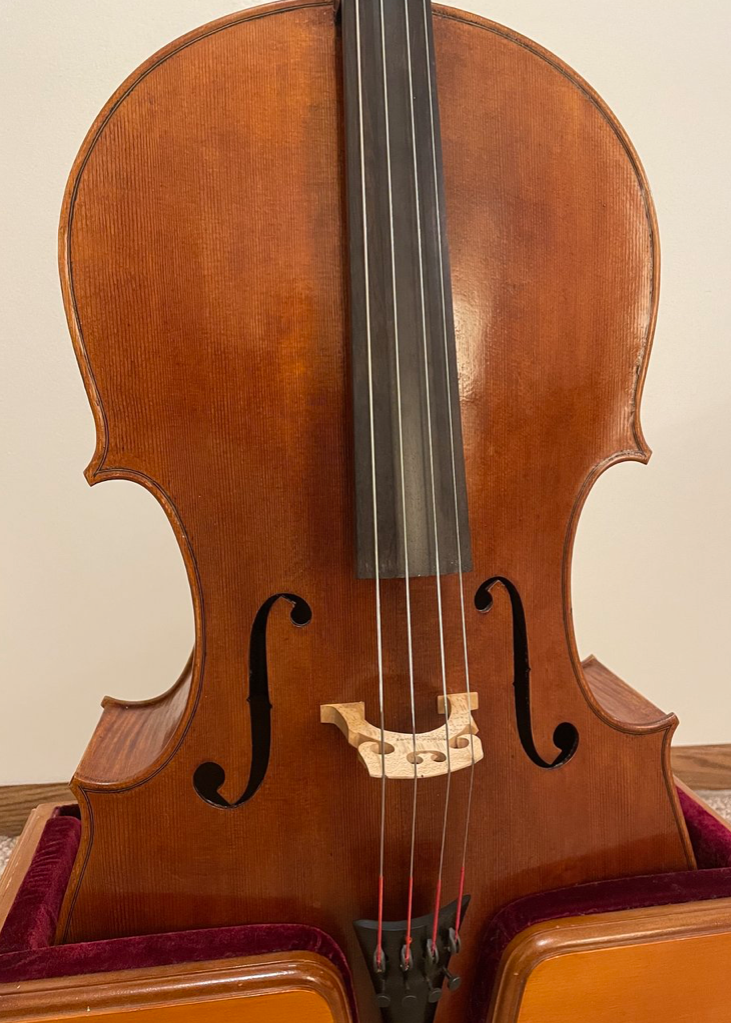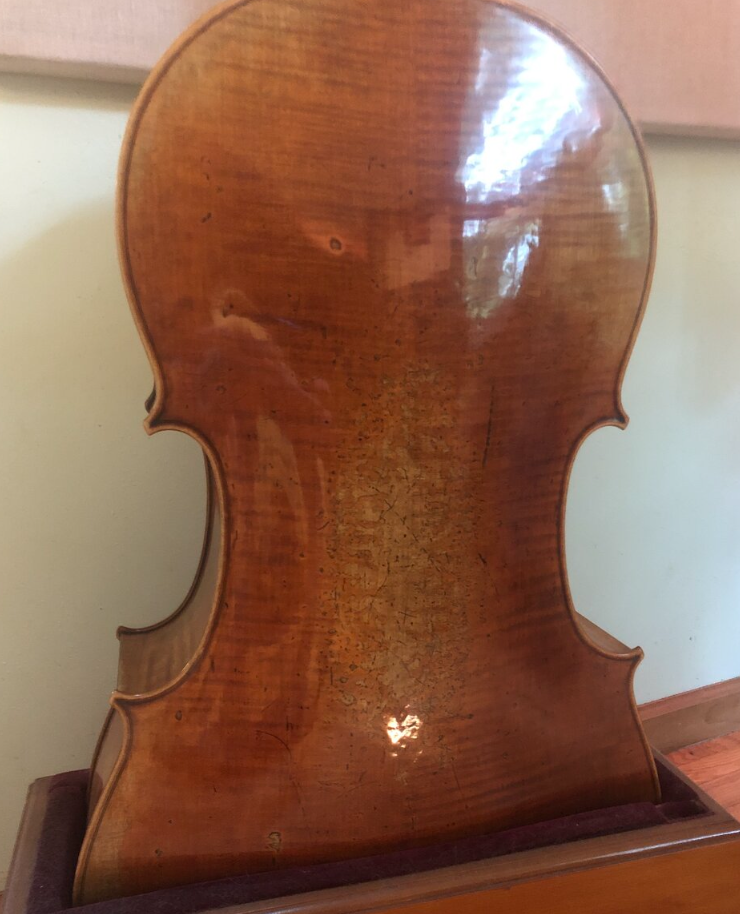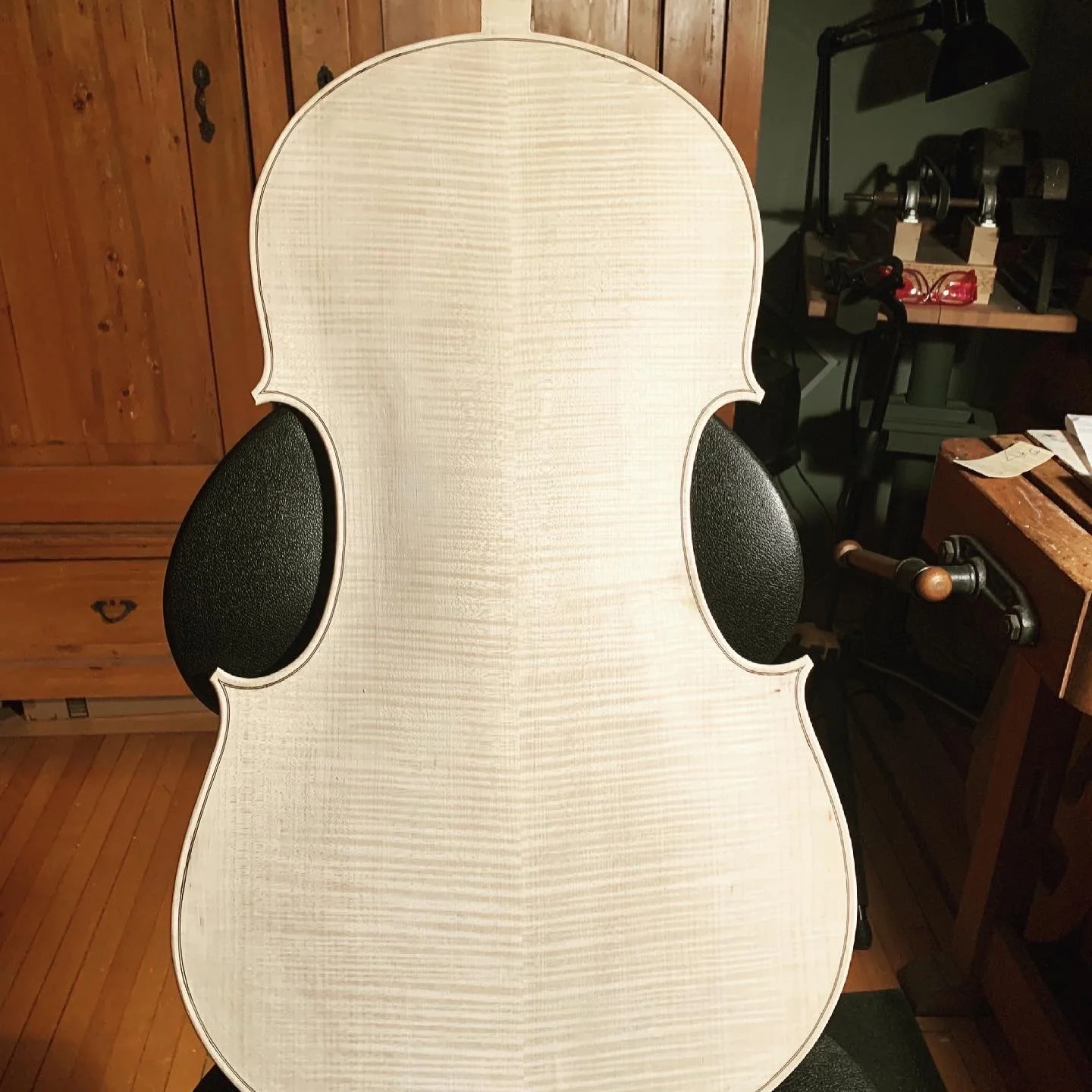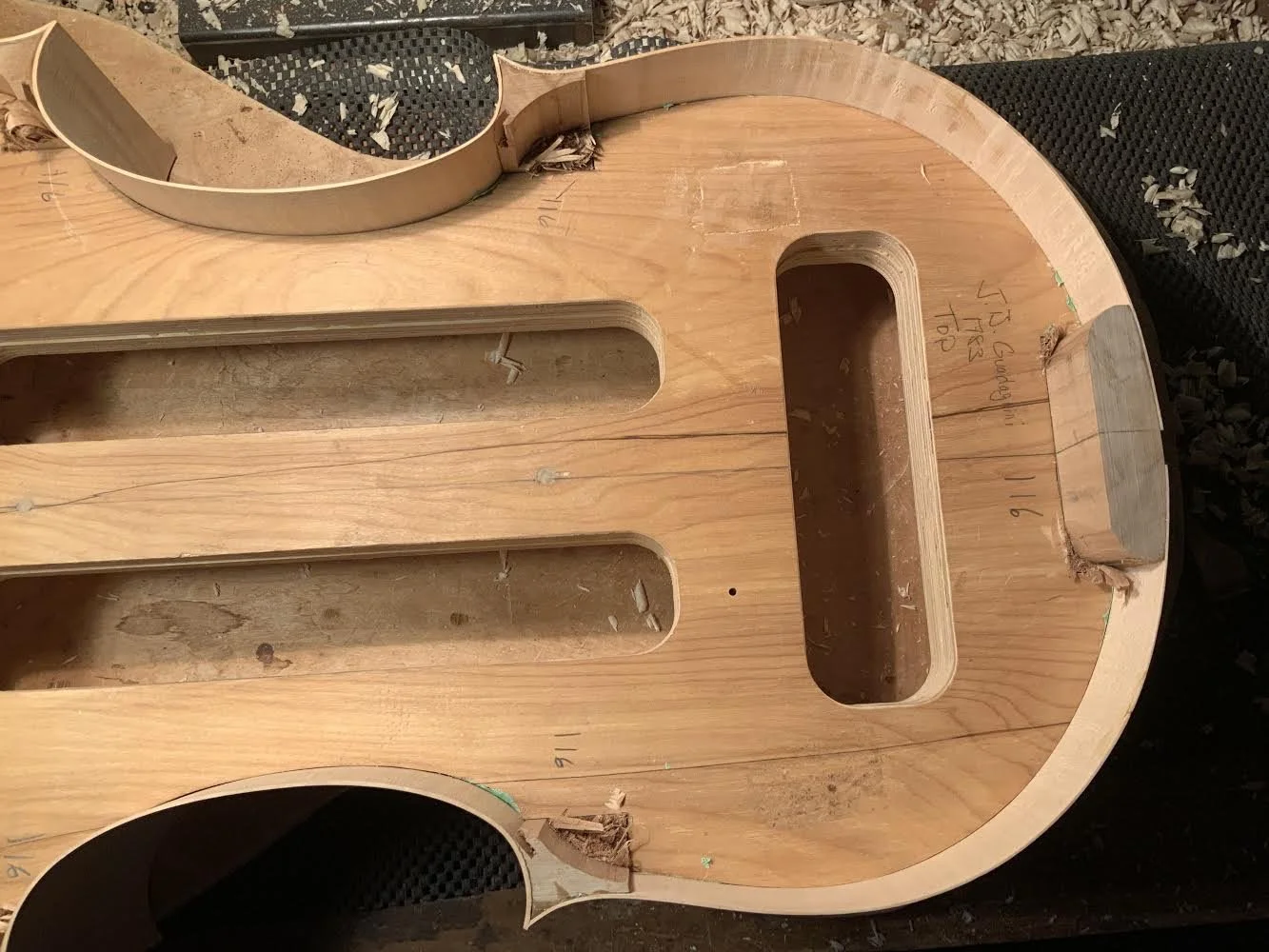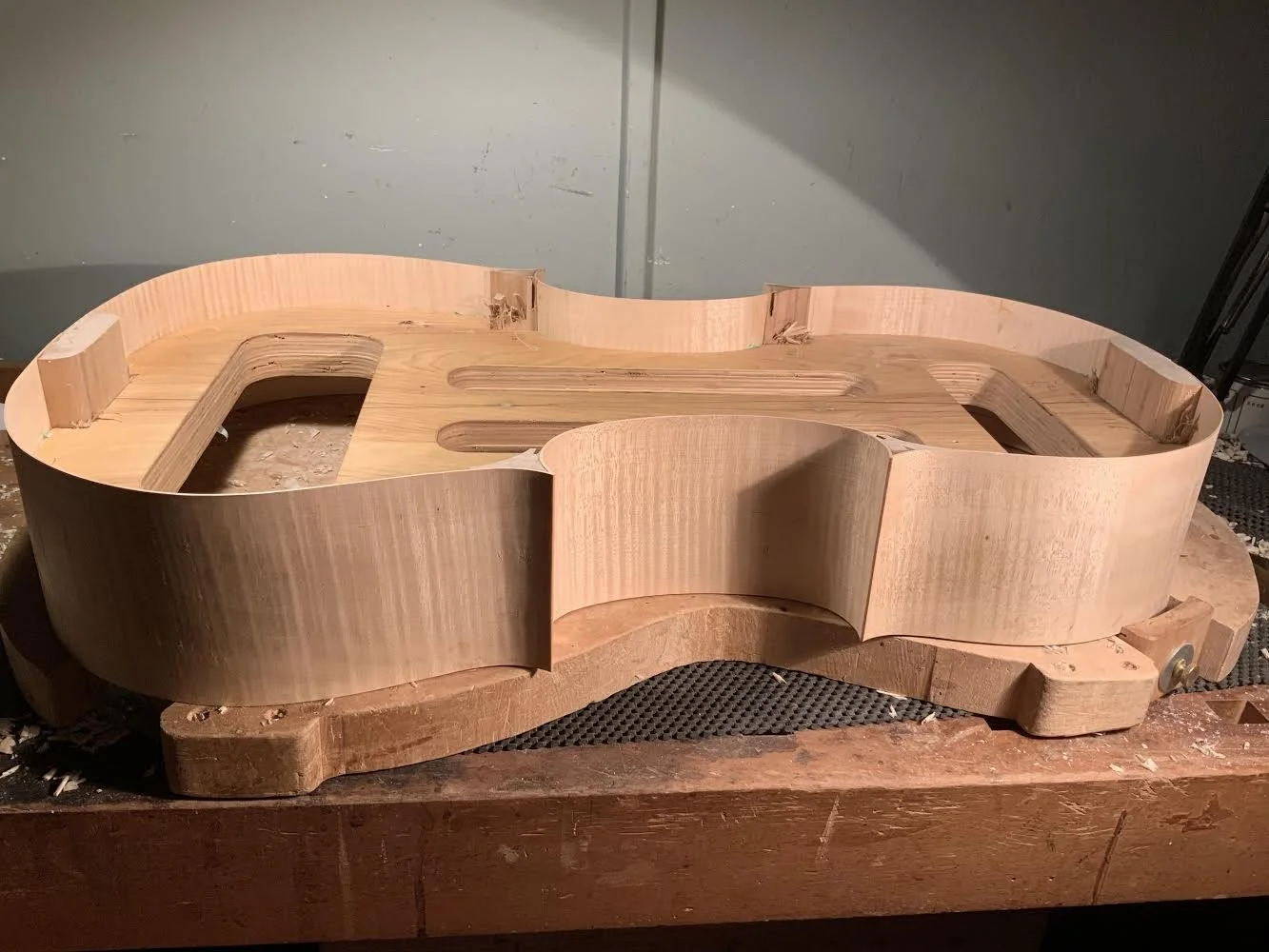Visiting My Old Cello
I thought I would give a little run-down of some of my recent musical activities since it has been quite a while since I made a blog entry. Before I get into musical things, one major athletic thing I decided to do this year was Horribly Hilly Hundreds, a local bike event in the hills to our west. I thought it would be a good challenge for my 40th birthday. The ride covered 200k and 11,000 feet of elevation over about 8 hours of riding. I was pushed to my absolute breaking point and for a variety of reasons, but mostly having to do with my heart health, I will probably never do anything like this again. Here’s my friend Jon and I after the ride attempting to eat the food that was provided to finishers. I have spent so much time on my bike since the pandemic started. I think it remains a big question what kind of riding I want to do going forward. There’s something seductive about these hard rides, but I felt incredibly burnt out mentally after it was over.
About a week after that ride, I drove up to Minneapolis where my old cello was waiting for me. It had had a neck reset, new pegs, a new endpin, a new bridge, post…etc. They told me ahead of time that it was sounding amazing, but I didn’t put too much stock in that given how subjective sound can be. I find most shops have their own specific way they like instruments to be set up and that this can make each cello in their shop sound somewhat similar. Since I’d never been to Claire Givens, I wasn’t really sure what their work would look like and what the sound concept would be, though I had heard very good things.
I wasn’t sure if being reunited with this cello would be emotional at all. I didn’t end up feeling much about it initially. Maybe I was a little tired from the drive that morning and unable to reflect on everything that cello has meant to me. I was surprised to feel so blank. When I sat with it, it felt unfamiliar and upon playing it, I was shocked by playability and the richness in the bass. Many of the issues I’d had with that cello had been resolved by the neck reset and it made me wonder what would have happened if I had gotten this done before deciding it was time to commission a new one. I suspect nothing would have changed, but we’ll never know.
The cello had a very touchy and unbalanced a-string before the work was done and after the work, the A-string was buttery and easy to play. It felt like a completely different cello in some ways. My current cello still contains my preferred sound, but there is something about the bass of that cello which I will miss. I spent about an hour playing it and then talking with various members of the staff before I tried out some of their other inventory. If I do say so myself, my old cello felt like the best one in their inventory and I am hopeful it will sell…..or am I? It is frustrating when the problems you had with an instrument seem to have been fixed and then you wonder why you made the change at all.
If it doesn’t sell by December, I have the option to take it back assuming I pay for all of the work that has been done to it, which is considerable. When I think about that possibility I am filled with a mix of joy and sadness, but also confusion because I don’t know where that instrument fits into my life. Even though many of its issues have been fixed, it is hard to imagine a good use for it. It would likely languish as an investment piece, or perhaps it would be loaned to promising students. Or maybe I would use it occasionally for repertoire that required a bit more bass. Bass is great, but I find myself much more drawn to a sound with focus, projection and warmth rather than pure breadth.
I was a little sheepish about taking photos for some odd reason I can’t recall, but here are some photos from that day, including a photo from the stands of a Minnesota United game I attended with my old bike-polo buddy Ebbin.
The Willy Street Chamber Players Season came and went very quickly this year. I’m always impressed with the programming selections that Paran makes. I enjoyed playing Faure C minor piano quartet, a piece I last played when I was a super-senior at Boston University. During that year, I was taking private lessons and fitness swimming. It left me a lot of time to play for chamber groups that were in need of a cellist and I covered a lot of important rep that year in addition to becoming connected with members of the Arneis string quartet, a group I went to Banff with in 2007. I digress. I enjoyed our concerts this year, though my experience was shortened a bit by my attendance at the ROPA conference in Atlanta, GA
I admit I have not been to Georgia before. Conferences do not allow you to really explore a whole lot, but had I been given the chance I likely would have chosen indoor activities since the heat index was well over 100 degrees. I did get a chance to walk through Olympic Park on the last day a couple of hours before I got on the plane home and while I enjoyed the scenery, I found the heat ridiculous. We will often talk about how our location in Madison feels climate-change proof, at least during our lifetimes. I would describe the heat in Atlanta as “dire.” I feel lucky to be where we are and suspect more people will move north to the great lakes region as the climate continues to be more chaotic and dangerous in other parts of the country. This was not something I considered when I moved to Madison, but it seems to have been a positive accident.
The conference was inspiring and gave me a chance to recharge my unionist batteries, though being cloistered in the hotel was a little difficult for me. I usually like to wander off on my own to recharge and that was hard at this conference. I’m looking forward to next year’s conference in the bay area where I will get to visit my cousins.
Ffter the ROPA conference I returned to Madison and then Megan and I shot off to upstate New York to celebrate our wedding with Megan’s 97 year old grandmother who lives just outside of Rochester in Irodequoit. It is always fun to go back and explore Rochester. We drove down East Ave. to see all of the mansions, grabbing tea at Java’s and then driving through my old neighborhoods. Not too much has changed since I was there thirteen years ago except for a major downtown traffic project and a few business closures. It’s strange how some places I used to go look like they have remained exactly the same, and for others, it’s like they were never there.
We got a chance to go sailing with my old cello professor, Steve Doane after which he gave us pie and ice-cream. The last time he and I tried to go sailing together was July of 2010 and not only was there no wind, but when he asked me to turn on the outboard motor, I found that it was not attached to the back of the boat properly and it jumped off the boat. It only avoided sinking to the bottom of the lake because I was holding the end of the tiller/throttle with a death grip. Incidentally, holding it in that way meant the throttle was fully open and so it was whipping around trying to get free. Steve saved me by running to the back of the boat and hitting the kill switch on the motor. With some frustration we put it on the back of the boat and moored up to call it a day. This most recent outing was absolutely perfect. Great wind, characteristic semi-cloudy upstate New York skies and the very clear water of Canandaigua Lake. Plus, Steve let me captain for a bit, which was pretty fun.
After our trip to NY, I headed up to Brainerd Minnesota to the Lakes Area Music Festival. This festival was started by fellow Eastman cellist and Doane studio alum, Scott Lykins, who I overlapped with during my time there. It has become a major destination for orchestral musicians throughout the country. If there is a place where I could go to feel my imposter syndrome most deeply, it might be this place. I was surrounded by players from major orchestras of Minnesota, Milwaukee, Baltimore, San Francisco, the Met, the list goes on. The other side of that sword of course is that playing with a bunch of people that you feel are better than you can help you realize your full potential and up your game. It was a beautiful place and the music we made was amazing. Here’s a video from that experience, though obviously it doesn’t show the rehearsals, the social time, and the lake house we got to stay in while there. It was a hard experience to be there for only a few days. I think a longer stay might have given me more time to settle in. Key in this experience was reconnection with my old stand-partner from RPO, Grace. It was very fun to see her and meet her family.
I am currently back playing the regular MSO season and looking forward to playing Tosca fairly soon. MSO has announced that they will be holding a music director search to commence asap with the new MD taking over in 2026. It is an exciting time for the orchestra on many fronts and in the mean time we have three exciting seasons ahead. Next I will be posting about our trip to Italy, and specifically Cremona, the birthplace of the violin.
